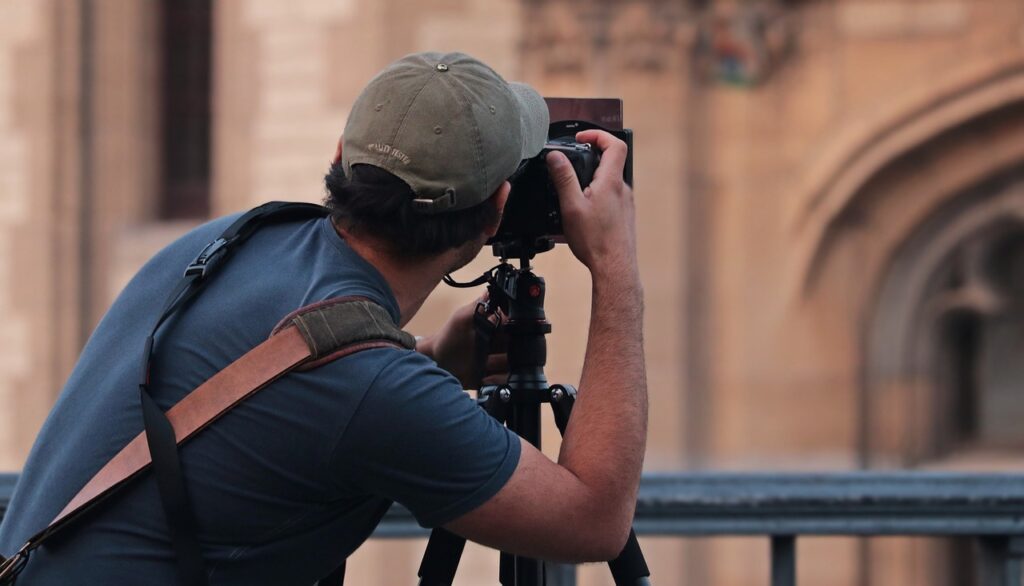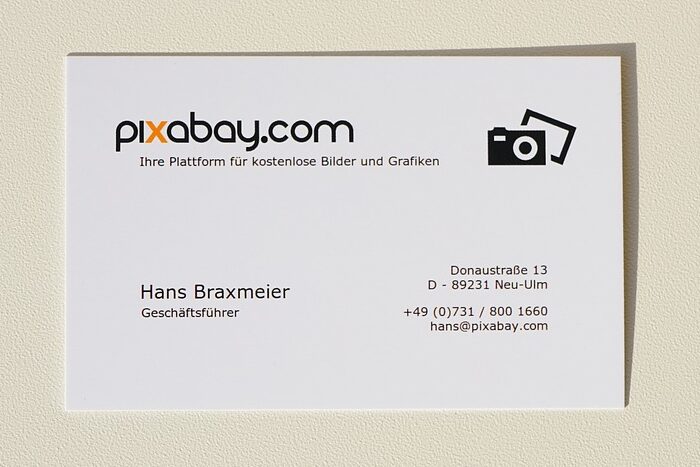How to Make Money Easily by Offering Photography Services
Photography is not just a creative outlet; it can be a lucrative way to make money if you know how to market your skills and services effectively. With the rise of social media, visual content is in demand more than ever, offering photographers multiple income opportunities. Whether you’re a beginner or a seasoned professional, there are several strategies to monetize your photography skills easily.
1. Start with Freelance Photography

Freelancing is one of the most accessible ways to make money with photography. The demand for high-quality images is constant in various industries, including real estate, events, fashion, and food. Here’s how to break into freelance photography:
- Create a Portfolio: Build a professional portfolio showcasing your best work. Use platforms like Behance, Adobe Portfolio, or even Instagram to highlight your style and expertise.
- Market Your Services: Join platforms like Fiverr, Upwork, and Freelancer to find photography gigs. You can also create a personal website or blog to attract clients directly. Make sure to optimize it for SEO by using keywords like “best freelance photographer near me” or “affordable photography services.”
- Network Locally: Offer services to local businesses or attend community events. Word of mouth can be a powerful tool for gaining clients. You can also contact local publications or influencers to offer your services in exchange for visibility.
2. Offer Event Photography

Event photography, especially weddings, corporate functions, and birthdays, can be highly lucrative. Clients are willing to pay a premium to ensure that special moments are captured perfectly.
- Weddings: Wedding photography is often the most profitable type of event photography. While it requires specific skills and equipment, the average wedding photographer earns anywhere from $1,500 to $3,500 per event, and sometimes more for high-end weddings.
- Corporate Events: Businesses need photos for marketing, branding, and internal use. Corporate event photography usually has steady demand, especially for conferences, trade shows, and team-building events. Reach out to local companies and marketing agencies to offer your services.
- Birthday & Private Parties: These events are less formal but still important to many clients. Offering packages for birthdays or anniversaries can help you secure consistent work, especially during peak times like holidays.
3. Sell Photos Online

Selling your photos online can generate passive income, especially if you build up a diverse portfolio of high-quality images that are in demand.
- Stock Photography: Websites like Shutterstock, Adobe Stock, and Alamy allow you to upload and sell your photos. Every time someone downloads your image, you earn a commission. While stock photography requires a large volume of images, it can provide a steady stream of income once you build a substantial portfolio.
- Prints and Merchandise: If your work has a unique artistic flair, consider selling prints, canvas art, or merchandise with your images. Websites like Etsy, Redbubble, and Society6 allow photographers to sell their work as prints or on various products, such as T-shirts, mugs, and phone cases.
4. Teach Photography

If you’re experienced in photography, teaching others can be a lucrative side business. There are multiple ways to approach this:
- Online Courses: Create and sell online photography courses on platforms like Udemy, Skillshare, or Teachable. Topics can range from basic camera settings to advanced techniques like portrait lighting, editing in Photoshop, or niche styles like macro or wildlife photography.
- Workshops and Tutorials: Conduct local workshops or offer one-on-one tutorials. This can be especially effective in targeting beginner photographers or those looking to improve their skills.
- YouTube Channel: Start a photography-focused YouTube channel, where you can share tutorials, tips, and behind-the-scenes content. Once you build a following, you can monetize through ads, sponsorships, and affiliate marketing.
5. Specialize in Niche Photography

Specializing in a niche can set you apart from competitors and make it easier to attract specific types of clients. Here are a few lucrative niches to consider:
- Product Photography: With the growth of e-commerce, product photography is in high demand. Small businesses and large retailers alike need professional photos to showcase their products online.
- Pet Photography: Pet owners love to have high-quality photos of their furry friends, making pet photography a fun and profitable niche. You can partner with pet stores, groomers, and breeders to offer your services.
- Real Estate Photography: Real estate agents and property managers are always looking for high-quality images to showcase properties. This niche requires specific skills, such as drone photography or editing HDR images, but it can be a consistent source of income, especially in urban areas.
6. Offer Retouching and Editing Services

If you’re skilled at photo editing, you can offer retouching and editing services to other photographers or clients who need professional-level post-production.
- Partner with Other Photographers: Many busy photographers outsource their editing work. You can collaborate with them to edit their photos, freeing up their time while earning a steady income.
- Sell Lightroom Presets and Photoshop Actions: Create and sell custom presets and actions to fellow photographers. These can streamline their editing processes and can be sold multiple times, creating passive income.
7. Social Media and Influencer Collaborations

Social media is a powerful platform for photographers to showcase their work and attract clients. You can also collaborate with influencers and brands to gain visibility and generate income.
- Instagram Portfolio: Use Instagram as a visual portfolio to attract clients. Make sure to post consistently, use relevant hashtags, and engage with your audience.
- Brand Collaborations: Many brands, especially in fashion, travel, and lifestyle industries, need high-quality visual content for their social media and marketing campaigns. Reach out to them or join influencer platforms like AspireIQ or Tribe to find collaboration opportunities.
8. Become a Content Creator

Combining photography with content creation can be a lucrative way to earn money. Many brands are willing to pay for high-quality content that they can use for their websites, blogs, and social media.
- Blogging: Start a blog where you share photography tips, tutorials, and behind-the-scenes stories. You can monetize your blog through affiliate marketing, sponsored posts, and selling digital products like eBooks or presets.
- Sponsored Posts: Once you have a substantial following on Instagram or YouTube, you can start collaborating with brands for sponsored posts, earning money by promoting products or services while showcasing your photography.
Conclusion
Making money with photography doesn’t have to be difficult. With the right strategies, you can turn your passion into a profitable business. Start by freelancing and building a portfolio, then expand into niches or offer additional services like teaching and editing. Remember, success in photography depends on marketing your services effectively, networking, and consistently improving your skills. Whether you’re shooting weddings, teaching others, or selling stock images, the opportunities are endless in today’s visual-driven world.
How much money can you make as a photographer?

Photography in India has transformed from a niche hobby to a highly sought-after professional career. Whether you’re passionate about wedding photography, fashion, or even product photography, there are diverse opportunities to earn a living. In this blog post, we’ll explore the income potential for photographers in India, examining various photography niches, factors that influence earnings, and tips for maximizing your income.
1. Factors Affecting Income as a Photographer in India
Before diving into specific numbers, it’s important to understand the factors that influence how much a photographer can earn. These include:
- Experience: Beginners generally earn less than seasoned professionals who have built a reputation and a strong portfolio.
- Geographic Location: Photographers in metropolitan cities like Mumbai, Delhi, and Bangalore tend to earn more than those in smaller towns or rural areas, as demand and pricing vary significantly.
- Specialization: Different niches in photography offer varying income levels. Wedding and commercial photographers typically earn more than hobbyist photographers or generalists.
- Market Demand: Your ability to market your services effectively and target high-paying clients can also make a huge difference in how much you earn.
2. Earnings by Photography Niche in India
The amount of money a photographer can make largely depends on the type of photography they specialize in. Below are some popular photography niches in India and their average income levels.
a. Wedding Photography
Wedding photography is one of the most lucrative fields in India. The demand for professional photographers for weddings is consistently high, and couples are willing to spend significantly on preserving their memories.
- Average Earnings: ₹50,000 to ₹2,00,000 per wedding.
- High-End Weddings: For luxury weddings, top-tier photographers can charge anywhere from ₹3,00,000 to ₹10,00,000 or more.
Wedding photographers who offer complete packages, including videography, photo albums, and candid shots, often command higher rates. The income also varies based on the number of events, such as pre-wedding shoots, engagement ceremonies, and reception coverage.
b. Fashion Photography
Fashion photography, especially in metropolitan cities, is highly competitive but also financially rewarding. Photographers working with top fashion designers, magazines, or brands can earn significantly more.
- Freelance Fashion Photographers: ₹20,000 to ₹1,00,000 per project.
- Established Fashion Photographers: ₹1,00,000 to ₹5,00,000 per campaign or photo shoot.
The fashion industry in India offers both freelance opportunities and full-time roles with agencies or brands, depending on your experience and reputation.
c. Commercial and Product Photography
With the rise of e-commerce and digital marketing, commercial and product photography has seen immense growth in India. Businesses need high-quality photos for their websites, catalogs, and advertising campaigns.
- Freelance Product Photography: ₹5,000 to ₹50,000 per day, depending on the complexity of the project.
- Corporate Photography: Larger brands may offer ₹1,00,000 to ₹5,00,000 for commercial shoots.
Specializing in product photography for niche industries like jewelry, electronics, or fashion can significantly increase your earnings.
d. Portrait and Family Photography
Portrait and family photography is also a growing field in India, especially in urban areas where people are looking for professional photos for family events, newborn shoots, or personal branding.
- Average Earnings: ₹5,000 to ₹25,000 per session.
Offering value-added services like photo albums, retouching, and framed prints can help increase your income in this niche.
e. Real Estate Photography
Real estate photography is an emerging field in India, especially in metropolitan cities where property listings demand professional-quality photos.
- Average Earnings: ₹10,000 to ₹50,000 per project.
Adding services like virtual tours, drone photography, and high-end editing can help increase the rates you charge.
3. Freelance vs. Full-Time Employment
Many photographers in India work as freelancers, which allows them to have greater flexibility but also demands more effort in finding clients and marketing their services. Freelance photographers can either charge hourly rates, day rates, or offer packages based on client needs.
a. Freelance Photographers
- Beginners: ₹5,000 to ₹20,000 per project.
- Intermediate: ₹20,000 to ₹1,00,000 per project.
- Established Professionals: ₹1,00,000+ per project.
The advantage of freelancing is the flexibility to choose projects and set your own rates. However, it requires consistent marketing, client management, and portfolio updates to maintain a steady income.
b. Full-Time Photographers
Many companies, studios, and media houses in India hire full-time photographers to handle their photography needs, especially in fashion, media, and advertising.
- Entry-Level Photographer: ₹2,00,000 to ₹4,00,000 per year.
- Mid-Level Photographer: ₹5,00,000 to ₹8,00,000 per year.
- Senior-Level Photographer: ₹10,00,000+ per year.
Full-time employment provides a more stable income but may lack the flexibility and creative freedom that freelance work offers.
4. Tips for Maximizing Your Photography Income
- Diversify Your Services: Offer additional services such as videography, drone photography, or photo editing to increase your income.
- Network and Collaborate: Build relationships with other professionals, such as event planners, designers, and marketing agencies, to get more referrals and consistent work.
- Use Social Media: Showcase your work on Instagram, Facebook, and Pinterest to attract potential clients. Many successful photographers use these platforms as their primary marketing tool.
- Invest in Quality Gear: High-quality equipment can help you deliver better results, which can justify higher rates. Clients are more likely to pay a premium for professional-grade work.
- Create Packages: Offering package deals, such as combining pre-wedding and wedding photography, or product and lifestyle shoots, can make your services more attractive to clients while allowing you to charge more.
Conclusion
In India, a photographer’s income varies widely based on experience, location, and niche. Wedding and commercial photographers tend to make the most money, while other areas like portrait or event photography offer more consistent work. Whether you choose to freelance or work full-time, the key to success lies in honing your skills, building a strong portfolio, and continuously marketing your services.
With the right approach and strategy, photography in India can be not only a rewarding career but also a profitable one.
